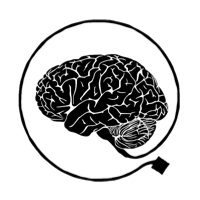Explaining our Actions: A Critique of Common-Sense Theorizing (CUP, 2025)
Peter Carruthers
1. Which actions?
The proximal goal of Explaining our Actions is to critique the standard belief-desire model of actions and action-explanation, confronting it with our best science. A more distal methodological goal is to show that the methods still employed by many philosophers who address metaphysical questions about the mind and its contents (relying on some combination of common-sense beliefs, linguistic analysis, introspection, and intuitions generated from imaginary examples) are bankrupt. To understand the mind in general – as well as the nature and causes of actions in particular – we need to engage with the science.
Following an opening chapter that lays out the goals of the book and its major assumptions, Chapters 2 and 3 then discuss a range of forms of action that fall outside the scope of the standard model altogether. These include speeded-response actions that can be initiated and largely executed prior to the stimulus becoming conscious, as happens in many sports; the detailed movements that one makes in the course of executing many everyday actions and skills (guided by the dorsal “how to” visual stream); habitual actions; and actions that are direct products of one’s affective states, both expressive (the fear-face, the disgust-face, and so on) and seemingly-instrumental ones that are actually not goal-directed (turning to run from a sudden and imminent threat, automatic withdrawal from a disgusting object). None of these actions are performed for reasons, and none result from decision-making implicating one’s beliefs and desires.
Although some philosophers have addressed the nature of skilled action (running the gamut from claims of complete mindlessness to analyses of know-how as forms of propositional knowledge – claims that I show to be radically mistaken), the field that calls itself “the philosophy of action” is almost exclusively concerned with intentional actions. These are actions that result from decisions taken in light of one’s reasons for action (one’s beliefs and desires). There are a number of plausible (mutually consistent) explanations for this narrow focus. One is that people are simply unaware of the extent and range of actions that are not performed for reasons. In large part this is because as soon as our attention is drawn to one of those actions, we readily interpret it in light of our background goals and values. Thus a professional tennis player, who actually initiated his response to an opponent’s serve prior to conscious awareness of its trajectory, might say afterwards, “I saw it was coming with heavy top-spin to my forehand, so I decided to drive my return down the line.” This is false if “see” and “decide” are intended to refer to conscious seeing and executive decision-making respectively, as they almost certainly are. Similar points apply to our habitual actions, as well as to seemingly-instrumental emotion-caused actions, like turning to run from an imminent threat.
In addition, philosophers often explain their near-exclusive focus on actions that are taken for reasons by claiming that such actions are distinctively human. This reflects an age-old view of Homo sapiens as the rational animal. But in fact recent research demonstrates that humans are, most fundamentally, cultural animals (adapted for cultural living and cultural learning), and that much of what philosophers think of as our rational nature is actually culturally constructed and culturally acquired (Henrich & Muthukrishna 2024). Moreover, our capacity for practicing and acquiring novel skills turns out to be at least as distinctively human as are capacities for foresight and planning (each of which exists in nascent form in some other mammals and birds, it should be said). Human hunter-gatherers were able to adapt to a wide variety of ecological habitats around the globe by gradually accumulating the knowledge and behavioral skills needed to thrive in those environments; individual intelligence played a much more limited role (Boyd et al. 2011). Since humans are skill-acquiring animals, understanding the nature of skilled action deserves much more attention than it currently receives in our field.
It is also often claimed that only intentional actions are genuinely reflective of our selves, resulting from our values and choices as persons. Indeed, it is sometimes even said that we are passive with respect to habitual, skilled, and affect-caused actions (Wu 2023). This, too, is a mistake, albeit one that contains a nugget of truth. What is true is that actions taken after reflection and thought (especially extended reflection) implicate more of our beliefs and values than do skilled actions and affect-caused actions undertaken “in the moment.” So they reflect more of ourselves, and it makes sense that we should be held especially responsible for them. But there are also a great many actions that we initiate spontaneously, without conscious reflection, with respect to which we are unquestionably agentive. Skilled and affect-caused actions are just as self-involving as these are.
In short, the philosophy of action needs to broaden its scope to encompass, and to devote much more attention to, forms of action that fall outside the standard belief-desire model. But in order to do so effectively, it needs to engage with the relevant science.
Boyd, R., Richerson, P., & Henrich, J. (2011). The cultural niche: Why social learning is essential for human adaptation. Proceedings of the National Academy of Sciences, 108, 10918-10925.
Henrich, J. & Muthukrishna, M. (2024). What makes us smart? Topics in Cognitive Science, 16, 322-342.
Wu, W. (2023). Movements of the Mind: A theory of attention, intention, and action. Oxford University Press.


Pingback: 哪些行动? - 偏执的码农